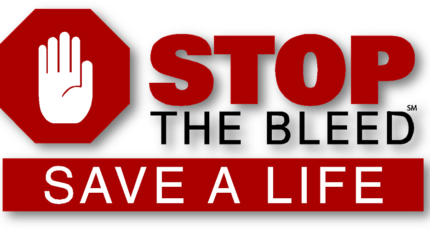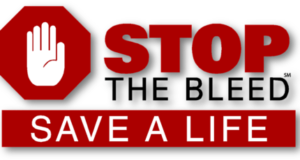
How To Stop Bleeding: Applying pressure to the region is the first step you should take if you are bleeding, according to experts. When blood spills from your blood vessels, bleeding occurs, frequently as a result of a wound. Internal bleeding, in which you bleed beneath your skin, can occur in addition to external bleeding, which happens when you have a cut or discharge that is bloody. Enough Info

. According to research, unchecked or severe bleeding might result in shock, which implies your body is running low on blood. You can probably manage minor bleeding wounds at home, but you should contact a doctor right once if you have excessive bleeding or are having trouble controlling it.
Even the little bleeding brought on by cuts and scratches needs to be controlled because bleeding from injuries is fairly prevalent. These wounds may frequently be treated at home, but it’s crucial to know how to do so safely. If possible, apply latex gloves and wash your hands before treating the wound.
This article examines eight cures for stopping bleeding.
Putting a Stop to Minor Bleeding from Tiny Cuts
1. Rinse the cut with water
Running water will help halt the bleeding while also cleaning the wound. To restrict the blood vessels and halt the bleeding, run cold water over the wound. Similar procedures using hot water will cauterize the wound and cause the blood to clot. Use either hot or cold water; none should be used together.
- To seal up the blood arteries, use an ice cube rather than cold water. Hold the ice against the wound for a short period of time until the bleeding stops and the wound closes.
- A hot shower will remove all the blood and cauterize all the injuries simultaneously if you have several minor cuts on your body.
2. Apply pressure to the cut
After cleaning the wound, press a clean piece of gauze or tissue paper on it. Check to see if the bleeding has stopped after holding the tissue or gauze in place for a while.
- Replace the tissue or gauze with a fresh, dry piece if blood soaks through it.
3. A styptic pencil might work
These waxy pencils are perfect for any small cut and were initially designed for shaving burns and nicks. Let the mineral astringents in the pencil do their work as you rub it over your skin. When you first touch it, it will sting a little bit, but within a few seconds, the discomfort and bleeding will stop.
4. Petroleum jelly can be added to promote clotting
Because petroleum jelly or Vaseline has a waxy feel, dabbing a small amount of it on small cuts will stop the flow of blood away from the skin and give the wound time to clot. If you don’t have any simple petroleum jelly or Vaseline on hand, you can use ordinary lip balm.
Read Also: How To Build Self-Esteem
5. Apply antiperspirant
Your deodorant contains aluminum chloride, which acts as an astringent to block blood flow, much like a styptic pencil. You can either massage the stick directly onto the cut or dab some on your finger before applying it to the wound. How to have a good singing voice (Top 14 Tips)
6. Apply Listerine
Regular Listerine, which was first developed as an aftershave, can clean your wound and assist in halting blood flow. Pour some Listerine directly over the wound, or dab it on with a cotton ball after dipping it in Listerine. After a minute or two, you should observe a decrease in blood flow.
7. Use an alum block
This soap-like bar was made from minerals that aid in stopping bleeding. Rub the cut with a wet alum block after moistening it with water. You can lay the block over your cut without exerting any pressure; the minerals will accomplish the healing for you.
8. Use white vinegar to clean the wound
Vinegar’s astringent qualities aid in the cleaning and clotting of minor cuts. Apply a small amount of white vinegar with a cotton ball to the wound while you wait for the bleeding to cease.
9. Witch hazel can be used to halt bleeding
Witch hazel functions as a natural astringent similar to white vinegar and is excellent for clotting minor incisions. For the same result, either pour a small amount over your cut or dab it on with a cotton ball.
10. Once the bleeding has stopped, dress the wound.
To help keep out any dirt and limit more bleeding, cover the wound with a clean bandage or dressing. You can apply a basic bandage or some fresh gauze.
Read Also: How to Stay Fit at Home

Treating serious wounds
1. Lay down
If you are able to raise your legs or place your head lower than your trunk, it will help to reduce the likelihood of shock. Before continuing to assist someone, be sure they are breathing and moving freely.
Make an immediate call to emergency services or seek medical assistance if you believe the individual you are aiding is in shock.
2. Lift a damaged limb.
In order to lessen excessive bleeding, raise the injured limb—assuming it is an extremity—above the heart. However, if you think the bone in the limb may be damaged, do not try to move it.
3. Do not leave any debris in the wound
Remove any dirt or foreign objects that are visible, but avoid carefully cleaning the wound because this could make it worse. [8] Stopping serious bleeding is your first goal right away. The wound can wait to be cleaned.
- However, if the foreign object is huge (such as a big piece of glass, a knife, or anything similar), leave it alone. Most of the bleeding is probably being stopped by it. Simply apply pressure to the area around the object without pushing it in farther.
4. Till the bleeding stops, apply hard pressure immediately to the wound
Utilize a pad of fresh gauze, clothes, or dressing. If nothing else works, even your hand will. Put your palm over the pad and use your fingers or a hand to firmly press on the wound.
5. Apply steady pressure
You can apply pressure to an injury on a limb by using tape or a piece of cloth wrapped around the wound (a folded triangular bandage placed over the wound and tied is ideal). Use a hefty pad and continue applying pressure with your hands to the wound for injuries to the groin or other areas of the body where you are unable to bandage the wound.
6. Keep an eye out for any wound seepage
If the first bandage soaks through, use more gauze or more bandages. However, avoid overwrapping it as the added mass runs the danger of the pressure on the wound decreasing. Remove the bandage and pad and reevaluate the application if you think the bandage isn’t doing its job. [9] Maintain pressure if the bleeding seems under control until you are certain that it has stopped or until help has arrived.
7. When necessary, apply pressure points
Use a combination of direct pressure to the wound and pressure to one of these pressure points if pressure alone is unable to stop the bleeding. Press the blood vessel up against the bone with your fingertips. The following list of pressure areas most frequently required is provided:
For injuries on the lower arm, use the brachial artery. between the armpit and the elbow on the inside of the arm.
The femoral artery, for incisions in the thighs. runs close to the bikini line along the groin.The popliteal artery can be used to treat lower leg wounds. Located behind the knee.
8. Until aid arrives or the bleeding stops, keep applying pressure.
Until you are convinced the bleeding has stopped, don’t let up on the pressure. Check the wound occasionally to see if blood is still oozing through the dressing if it is not immediately apparent.
- Five minutes after the bleeding has stopped, you shouldn’t press on an artery again.
- If the bleeding poses a risk to your life, apply a tourniquet. Incorrect tourniquet application can injure the patient, yet they typically stop bleeding rapidly when used properly.
9. Keep an eye on the victim’s respiration.
If the bandages are excessively tight, check them. It is likely that the bandaging is too tight if the victim has chilly, pale skin, toes, or fingers that do not return to their usual color following compression, or if the victim complains of numbness or tingling.
Internal bleeding
1. Immediately call an ambulance if you think you may be bleeding internally
Transport the bleeding patient as soon as you can to a medical facility. Only a doctor can handle internal bleeding, which cannot be treated at home. Internal bleeding may cause the following symptoms:
- a quick heartbeat
- reduced blood pressure
- sweaty, chilly skin
- nausea or confusion
- Inflammation and discomfort close to the injury’s site
- the skin becoming bruised
2. Sit comfortably and unwind. If you can, stay in the same position while trying not to move
Keep the person you are assisting with internal bleeding calm and well-rested to prevent further harm.
3. Verify your breathing
Keep an eye on the victim’s respiration, circulation, and airway. If there is any external bleeding, take care of it.
4. Keep your body’s temperature normal
Apply wet towels to the victim’s forehead to prevent them from being excessively hot or cold.
Conclusion
Any circumstance involving significant bleeding has the potential to inspire anxiety. Most people don’t like to witness their own blood, much less that of another person! But maintaining composure and being prepared with a well-stocked first aid kit can significantly lessen the impact of a trying and painful event. Keep in mind that you can contact for assistance in an emergency, and take any instance of significant bleeding seriously.
FAQs and replies
1. How can I stop bleeding after getting a tooth pulled?
You might try biting into a tea bag or a piece of cotton gauze. Contact the dentist who performed the extraction right away if the bleeding lasts longer than 20 to 30 minutes or if it is pulsatile or severe.
2. Do you think it’s safe for me to attempt therapies that haven’t been shown to stop bleeding?
For a few reasons, you should never use anything that hasn’t been shown to stop bleeding. Because it’s an open wound, pollutants can enter your body. Using an untested product on the wound could lead to a variety of issues. It can aggravate your skin, increase bleeding, infect you, or trigger an allergic reaction. Be careful: Don’t use it if you’re unsure that it will be helpful.




